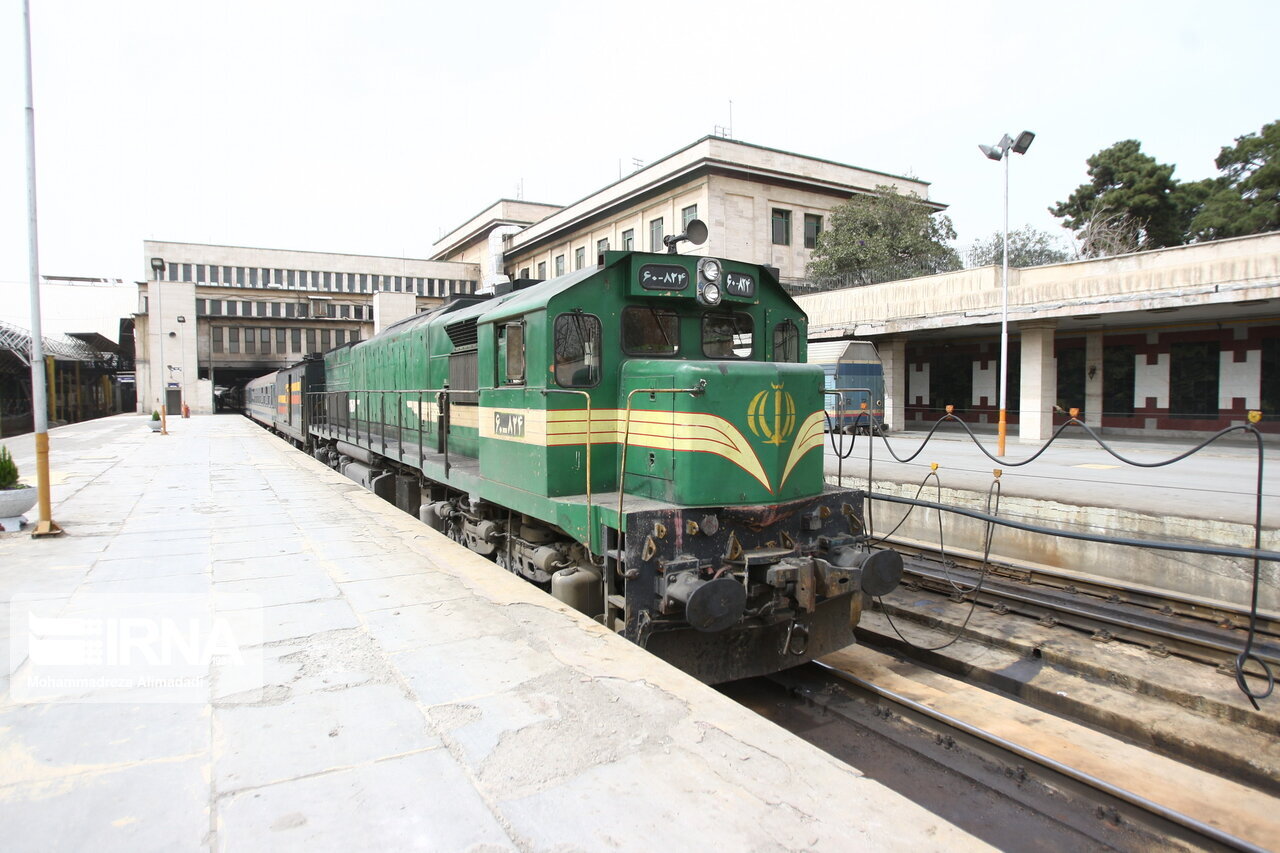Number of Iran’s operation-ready locomotives rises 18%

TEHRAN – The deputy head of the Islamic Republic of Iran Railway (RAI) said the average number of private sector locomotives ready for operation has increased by 18 percent in the third quarter of the current Iranian calendar year (September 23-December 21, 2023).
According to Mohammad-Hadi Ziaei-Mehr, the number of operation-ready locomotives was 104 locomotives per day in summer and the figure increased to 123 locomotives per day in fall, IRNA reported.
The official expressed hope that by continuously providing financial resources, which is due to the collection of claims, the railway fleet will achieve a better situation in the coming months, and the increase in readiness and reliability of locomotives will lead to the improvement of rail cargo transportation.
Last month, the head of the Islamic Republic of Iran Railways (RAI) said that Iran’s rail transit is going to set a new record in the current Iranian calendar year (ends on March 20, 2024).
Miad Salehi said the rail transit through the country registered a five percent hike in the first five months of the current calendar year (March 21-August 22, 2023) compared to the same period last year, the portal of Iran’s Transport Ministry reported.
Speaking in a news briefing on the sidelines of the seventh edition of Iran International Exhibition of Transportation, Logistics and Related Industries dubbed, Salehi pointed out that 21.6 million passengers were transported in the first eight months of the current Iranian calendar year (March 21-November 21, 2023) through the rail transportation network, also showing a 10 percent hike compared to the last year’s corresponding period.
It is expected that 30 million passengers will be transported in the country by the end of the current Iranian calendar year, which will be another record in the history of the railway company, he stated.
The deputy transport minister also pointed to the memorandums of understanding (MOUs) inked with the partners and neighboring states including Russia, Kazakhstan, Turkmenistan, and Turkey and stated that a part of these agreements will become operational in early 2024.
Salehi also mentioned the high quality of Iran-made freight wagons and noted that the country could export such wagons to other countries.
“We do not have any problems in the production of freight wagons, and good facilities are equipped in the country and due to the good quality of domestically produced wagons, there is a possibility of export,” the official said.
According to Salehi, production of freight wagons has increased by 48 percent in the current year and the production of new freight locomotives has also grown by 92 percent.
The development of the railway sector has been one of the macro policies of the Iranian government as it has been emphasized by the general policies of the country’s national development plans.
In this regard, the national railway fleet has constantly received new domestically-made locomotives and wagons in the past and current Iranian calendar years.
Last year, a total of 1,660 wagons and locomotives were added to the country’s railway fleet in four stages.
The railway fleet also received 346 new domestically-made wagons and locomotives in last September, in a ceremony attended by the head of RAI.
Of the mentioned 346 wagons and locomotives, 339 were freight wagons, two were locomotives, and five were passenger wagons.
The mentioned wagons and locomotives have been all manufactured by domestic companies and firms including Mapna Group, Pars Wagon, Kowsar Wagon Complex, and Green Polour Industrial Group.
The RAI head has also said the quality of railway passenger transportation services in the country is going to be significantly improved.
During a press conference held in last August, Salehi mentioned the development of railways as a necessary factor for the economic surge in the country.
He reiterated that the development of the transportation sector is vital for the economic surge, and the railway is the pillar for development in this sector.
The official also stated that RAI is seriously negotiating with other countries, especially the neighbors, to promote railway transit via Iran.
Advantages such as consuming less fuel and creating less pollution as well as high safety attach priority to the railway when compared to some other transportation systems, and make its development economically viable.
EF/MA
